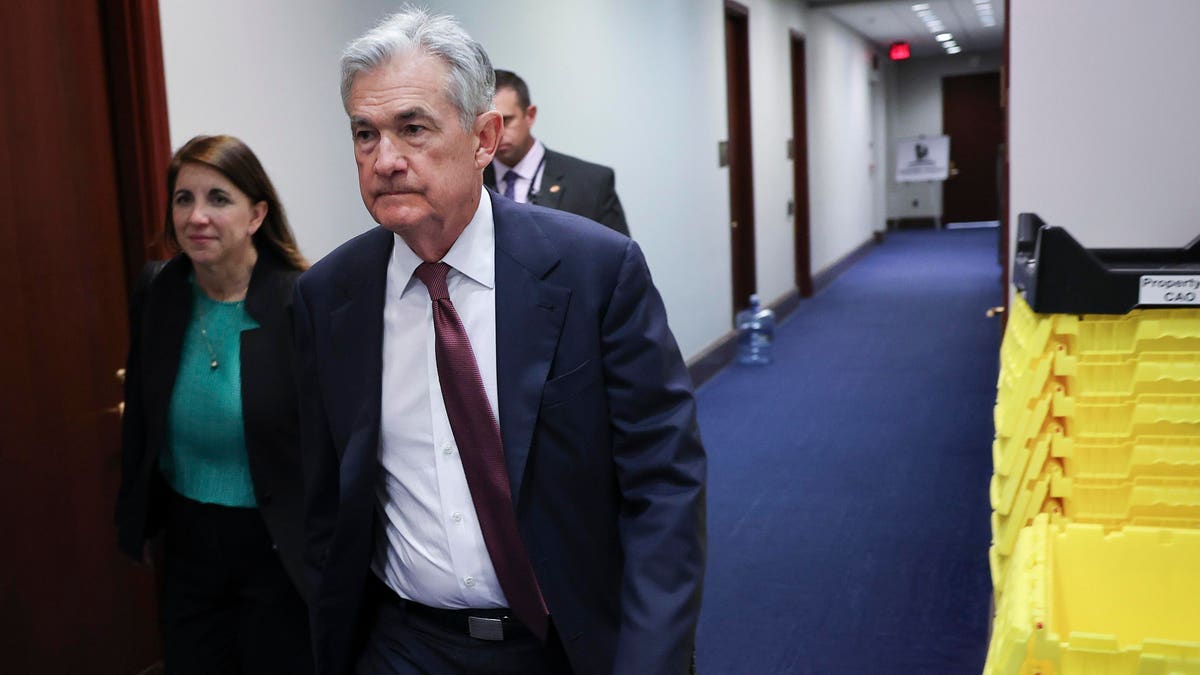Topline
The Federal Reserve signaled Wednesday its top decision makers are split over whether to pause its interest rate hike crusade, a crucial decision for the economy as inflation remains stubbornly high.
Key Facts
Central bank officials are “uncertain” whether to pursue further increases to the federal funds rate, according to minutes released Wednesday from the Fed’s policy-setting panel’s meeting earlier this month.
Many investors had hoped the Fed would offer hints to indicate it would pause, or even decrease, interest rates, but the meeting notes did little to indicate such, with the Fed vowing to retain “optionality” with its monetary policy moving forward.
Inflation remains “unacceptably high,” the Fed said Wednesday, adding recent data shows inflation is cooling “slower than expected.”
Further rate hikes may be necessary if inflation comes down at an “unacceptably slow” pace, according to the minutes.
Stocks were little changed following the Fed announcement
Big Number
66%. That’s the likelihood the Fed will pause its rate hike campaign at the Federal Reserve’s Open Market Committee meeting next month, according to the CME Group’s FedWatch Tool, which tracks futures contracts for the federal funds rate. This would be the first time the Fed chose to hold rates steady since last February, when rates hovered near 0%.
Key Background
The Fed hiked rates at 10 consecutive FOMC meetings as it sought to curb the highest inflation since the early 1980s, upping rates by 25 basis points from 4.75% to 5% to 5% to 5.25% two weeks ago. The federal funds rate nominally only impacts the interest rates paid by banks when lending to other banks but has wide-sweeping effects, causing individual and corporate borrowers to shell out higher interest payments for loans. Mortgage rates hit a 14-year high of over 7% late last year and now sit at over 6%, more than twice as high as they were two years ago, and public companies’ profits widely slid as they grappled with higher borrowing costs. Arguably the greatest impact of the Fed’s rate hike effort was its effect on regional banks; three of the four largest bank failures in American history have come over the last two months in First Republic, Silicon Valley and Signature Banks. Each of the institutions failed to properly manage risk associated with a higher cost of operations stemming from elevated interest rates.
What To Watch For
How the Fed’s less aggressive stance on monetary policy will impact stocks. The S&P 500 has slid about 9% since the Fed first increased rates last year despite rising 8% in 2023. The S&P’s upcoming performance likely depends strongly on whether the Fed keeps rates flat or cuts them, according to historical data cited Tuesday by Comerica’s top investment strategist John Lynch. In recessionary environments since 1950, the S&P has lost 20.7% when the Fed keeps rates the same for six months or more compared to a 7.7% gain when the central bank cuts rates, Lynch notes.
Fed Raises Rates Another 25 Basis Points—Signals Pause May Come If Greater ‘Risks Emerge’ (Forbes)
Fed Expects ‘Mild Recession’ This Year After Banking Crisis Rattles Markets (Forbes)
Read the full article here













